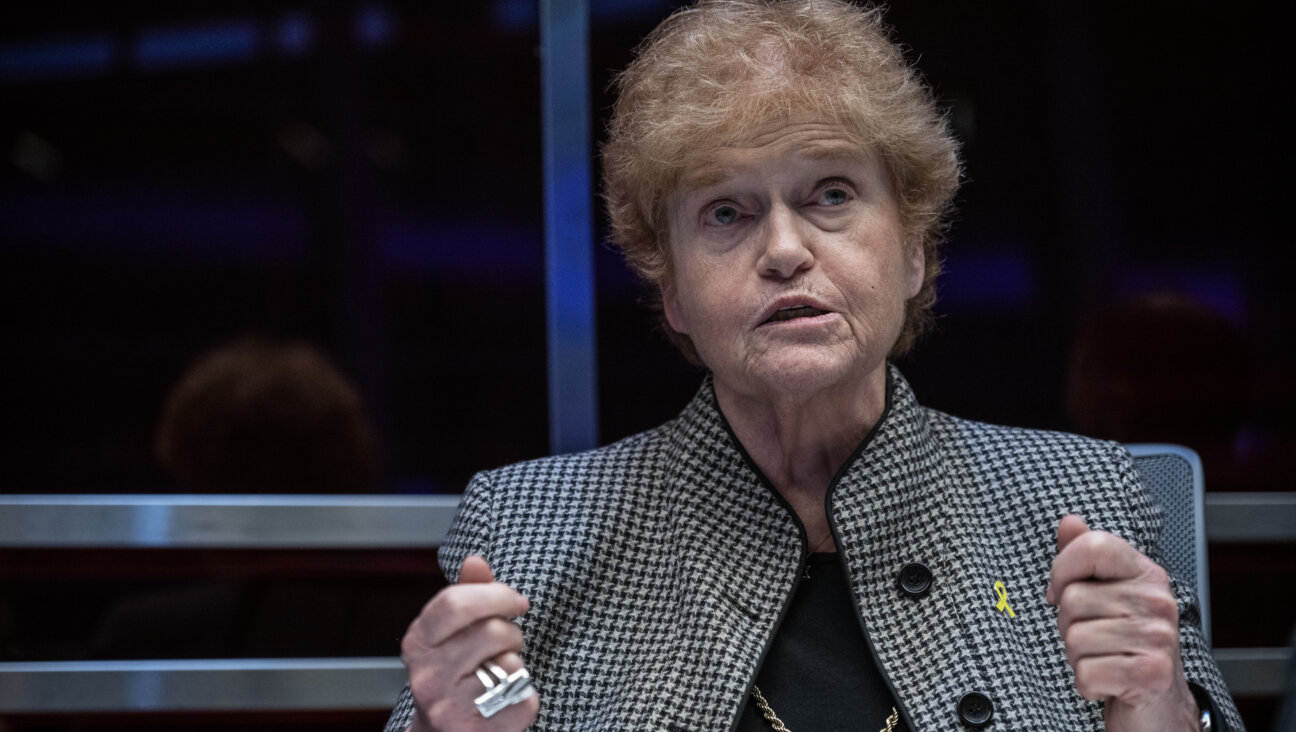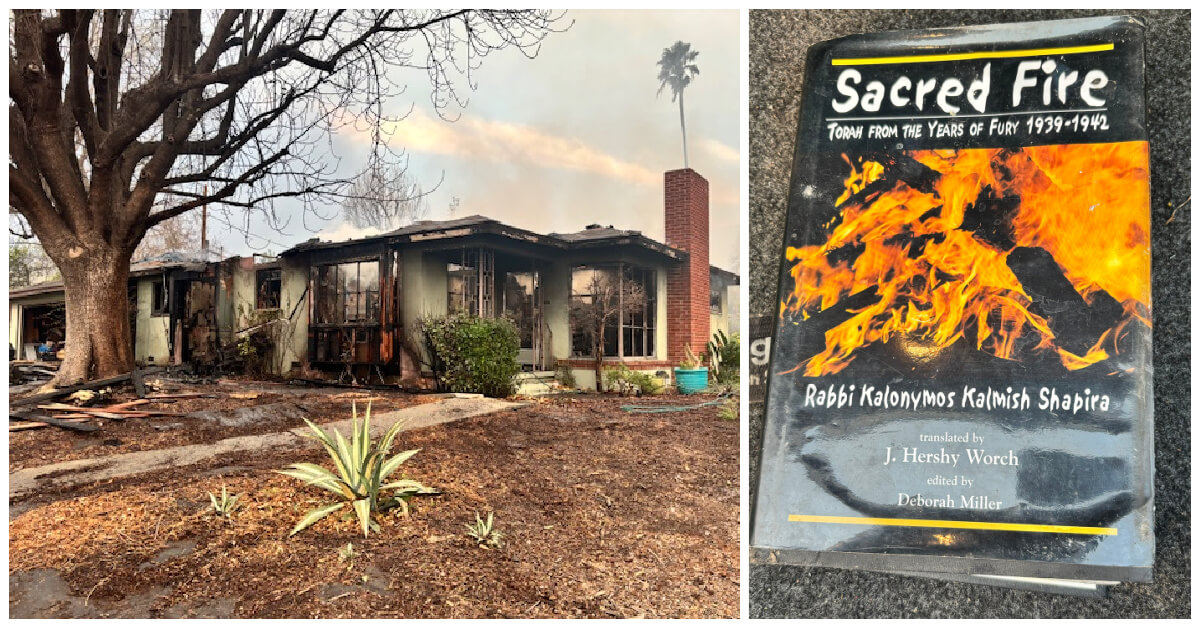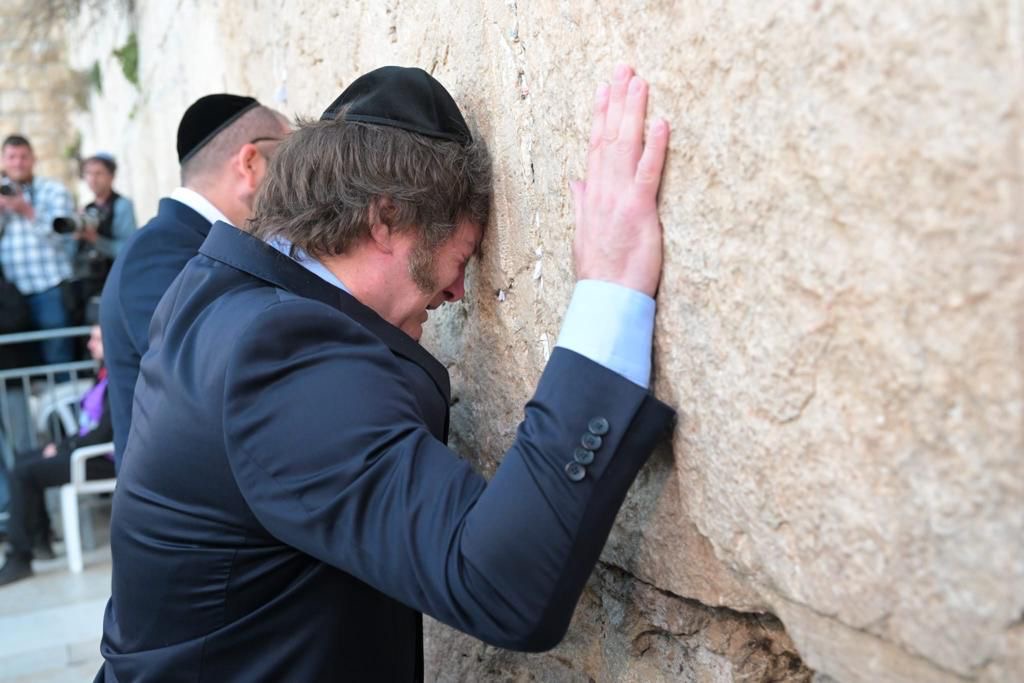Bronfman ‘Kvells,’ Debuts New Holiday Services
If you’re going to atone for your sins, you might as well do it in comfort.
And if you’re Edgar Bronfman, why not do it from the comfort of your own home?
As New Yorkers packed into synagogues on the evening of Kol Nidre to reflect on their transgressions of the past year, some 100 privileged guests joined the Seagram’s heir turned Jewish philanthropist in the lobby of his Upper East Side apartment house for an experimental, invitation-only service that had little in common with a traditional Jewish worship service.
Even Chelsea Clinton stopped by with her Jewish boyfriend for the following day’s Yom Kippur service, which included an afternoon of study with Deborah Lipstadt, the Emory University Jewish Studies professor who famously fended off a libel suit filed against her by Holocaust denier David Irving.
“I’m still kvelling,” Bronfman gushed in an interview, referring to what he described as his “post-denominational” High Holy Day observance. “Now I want to get it out to the whole world, because it’s an alternative to what we’ve been doing.”
Bronfman, who funnels millions of his estimated $3 billion fortune to Jewish causes through The Samuel Bronfman Foundation (named for his late father), explained what prompted him five years ago to inaugurate the tradition of holding his own service. “I can’t stand most services,” he opined. “They’re just so boring.”
The 77-year-old tycoon, who serves as president of the World Jewish Congress, decided he had two choices: forgo services, or create his own. In 2001, he chose the latter, and tapped Arthur Hertzberg, the eminent rabbi and Jewish historian, to lead them.
But Bronfman says he wanted something different, and Hertzberg never quite gave him that. So after Hertzberg fell ill, Bronfman decided to start from scratch. (Hertzberg passed away last spring.) Over lunch at The Four Seasons in November 2005, he sat down with Darren Levine, a charismatic, young rabbi ordained at Hebrew Union College-— the Reform movement’s flagship seminary — and laid out what he envisioned for an entirely different approach to a Jewish service: interactive dialogue, a new prayer book and lots of music — preferably original melodies. Essentially, something that would hold his attention and stand a chance of attracting the under-40 crowd.
Bronfman also added another innovation: In addition to having close friends and family — including his fourth wife, Jan Aronson, his two daughters, Clare and Sara, and his son, Matthew — Bronfman also invited all 520 American alumni of the Bronfman Youth Fellowship program, which each year sends 26 high school students to Israel for travel and study. Past Bronfman fellows include writers Jonathan Safran Foer and Daniel Handler (also known as Lemony Snicket), though neither made an appearance.
At last Sunday evening’s Kol Nidre service, Levine, 34, a boyishly handsome rabbi in round tortoise-shell glasses, struck just the inclusive tone that Bronfman had imagined he would. Seated casually atop a stool at the front of the moss-green rotunda, Levine addressed the attendees in the soothing tones of a self-help guru. He asked the audience questions and he told stories to flush out the meaning behind the holiday in excited prose. He flashed an occasional beatific smile.
In other words, he did what most rabbis do not do when they stand behind a pulpit and deliver a sermon, physically separated from their flock: He engaged congregants in a two-way discussion about the themes on which they are meant to reflect.
Explaining the five earthly pleasures from which Jews are asked to abstain on Yom Kippur — including food and sex — Levine asked the audience: “What do these five things push us to think about?” He nodded softly as a woman yelled out, “Self-denial!” and an adolescent boy quipped, “A cleansing.”
Seated to Levine’s right was the musical director, Daniel Leanse, a regular on the New York Jewish music circuit. Leanse strummed an acoustic guitar and cooed a litany of prayers, including the Sh’ma, accompanied by a pianist and a cellist. Bronfman chose Leanse to assemble the band and compose a new set of tunes for his services after listening to everything from High German to folk music, Levine said.
Midway through the service, Leanse was joined for a string of duets by a raven-haired 19-year-old songstress, Alana Grace, whose long bangs, flowing black dress and silver amulet brought to mind a young Stevie Nicks. But when the two exchanged heart-felt glances as they harmonized the word “Shalom,” the effect was more Sonny and Cher.
“It was about creating a space full of music and a real spirit,” Levine said.
“It was less important for us to make sure every single prayer was said and more important to make sure that when people left, they understood the themes of the high holidays, how the machzor was designed, and to walk out feeling like they can’t wait for next year’s holidays.”
A message from our Publisher & CEO Rachel Fishman Feddersen

I hope you appreciated this article. Before you go, I’d like to ask you to please support the Forward’s award-winning, nonprofit journalism so that we can be prepared for whatever news 2025 brings.
At a time when other newsrooms are closing or cutting back, the Forward has removed its paywall and invested additional resources to report on the ground from Israel and around the U.S. on the impact of the war, rising antisemitism and polarized discourse.
Readers like you make it all possible. Support our work by becoming a Forward Member and connect with our journalism and your community.
— Rachel Fishman Feddersen, Publisher and CEO






















